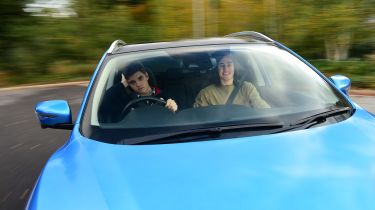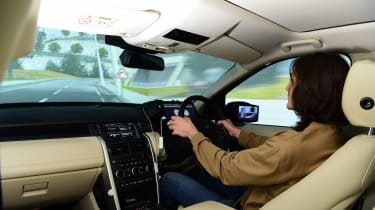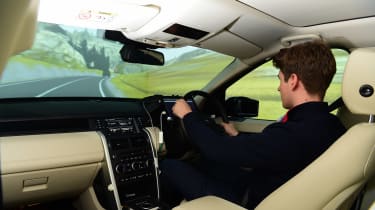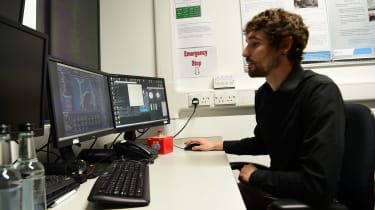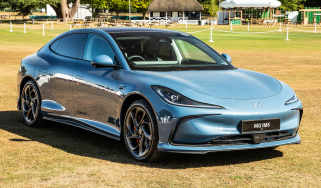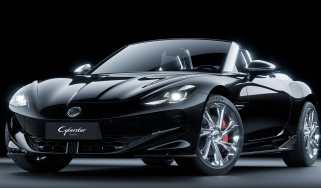Driving when tired: how dangerous is it?
In a unique experiment, we compared the driving of two of our journalists – one well rested, the other after no sleep at all – to demonstrate just how dangerous it is to drive while tired
There are plenty of things driving doesn’t mix with – alcohol and drugs both immediately spring to mind. Sleep deprivation is another obstacle to safe motoring, albeit one that probably carries less of a taboo.
This shouldn’t be the case, though, because driving while tired can be just as dangerous as doing so while under the influence. We’ve all seen those signs on the motorway that read, “Tiredness can kill, take a break” – and they’re there for good reason.
In a bid to highlight the problematic nature of driving while seriously tired, we set up an experiment. Auto Express staff writer Luke Wilkinson would get a good night’s sleep, while deputy consumer editor Tristan Shale-Hester (yours truly) would stay awake all night.
The pair of us would then travel to the University of Southampton’s Boldrewood Innovation Campus – with Luke giving me a lift there and back, for obvious reasons – to compare notes in a state-of-the-art driving simulator.
Luke’s experience – well rested
The driving simulator is much more impressive than I had expected it to be. The University of Southampton has a partnership with Jaguar Land Rover, who provided a Discovery Sport for the project. It sits in the middle of a dark room, supported on wheel chocks and circled by screens that display the car’s virtual surroundings, which certainly adds to the realism.
However, it’s nothing like driving a real car, because you get neither the sensation of speed nor the usual forces of acceleration, braking and cornering acting on you. So if you’re the type who suffers from seasickness, your body produces that sort of response.
The steering and braking systems are also unlike those in a normal car. The engineers detached the steering column from the rack and connected the union to an electric motor to provide some feedback force. The brake pedal was also still attached to the car’s hydraulic system but, because there’s no vacuum assistance from the engine, it’s as hard as stone.
The simulator is designed to test your reaction time to hazards, working like a more interactive version of the hazard-perception portion of the modern driving theory test. You get virtual pedestrians stepping out into the traffic as well as virtual erratic drivers carving you up – and the system measures the amount of time it takes for you to apply the brakes.
Beyond that, it also monitors how you place the vehicle within the lane, how well you pay attention to speed limits, how closely you follow the car in front, and how smoothly you tackle corners.
With a good night’s sleep under my belt, I breezed through the exam. I felt considerably more alert than my colleague (who passed out in an office chair shortly after the test was complete) and my pace through the course was steadier. I also kept my virtual vehicle between the white lines well and dealt with the hazards more effectively than Tristan.
Another interesting finding from the day was the difference in our attention. I looked ahead for potential hazards and anticipated the dangers, while Tristan (being completely exhausted) didn’t have the mental capacity for this sort of forward thinking. So his driving was more reactive, meaning his inputs weren’t as smooth as mine.
Speed played a part, too. The test route we were driving was set in France, so all of the road signs displayed speeds in km/h rather than mph. I figured this out the moment I got behind the wheel, whereas it took Tristan until he was halfway around the route (and travelling at 90mph rather than 90km/h through a built-up area) to realise there was a problem with his speed.
Tristan’s experience – sleep-deprived
I’m a firm believer that sleep is one’s greatest ally and do like to get my eight hours in, so the sensation of having been awake for more than 24 hours was new to me.
Overseeing the experiment was Rich McIlroy, a senior research fellow in transportation and human factors at Southampton University. He’d asked me not to use any energy drinks to stay awake – I was allowed to drink small amounts of coffee if necessary, but nothing stronger. It was imperative that I didn’t fall asleep for a single moment.
Much to my surprise, I achieved this without too much of an issue. I felt absolutely knackered at around 3am to 4am, but managed to keep myself going by taking in fresh air on the balcony. It must have been boring, though, because I found myself doing the ironing in the early hours.
Most interesting was how varied the experience was once dawn had broken and we were on our way to the south coast. One moment I would feel quite alright and appear to be functioning as normal, but the next I would be hit by a wave of tiredness and nausea.
It’s easy to imagine how someone without enough sleep might feel well enough to climb into their car, then start to fade while driving and risk nodding off at 70mph.
Behind the wheel of the simulator, I didn’t think I was performing too badly. I stopped in time for all the hazards, although in some cases it was a bit close for comfort.
I could tell, however, that my reactions were much less smooth than they normally would be while driving, and sometimes jerky. I wasn’t thinking ahead or doing any forward planning, as one ought to on the road.
My adherence to the speed limits wasn’t very accurate either. Sometimes I would unintentionally drive faster than was ‘legal’ on the simulated road, before realising and quickly slowing down.
The results
Rich took some time to analyse the data, then sent through a series of observations he had made.
“Although the reaction times don’t really tell much of a story, something I thought was interesting was that in the second attempt at the test route for each participant, Tristan went faster and went around a couple of the obstacles by speeding up and swerving to avoid them,” he explained. “In one case, he went slightly off to the right of the carriageway to avoid the pedestrian and avoid braking.
“Luke actually did not need to brake, or only needed to brake very softly, for three of the stopping events; essentially, he anticipated the event,” Rich continued. “Tristan did not seem to display this anticipatory behaviour, but rather just sped up and swerved around obstacles.”
Luke also had an average speed of 23.8mph, whereas Tristan’s was 38.8mph. This illustrates how Luke was able to anticipate the hazards more, while Tristan wasn’t thinking ahead.
We went over these findings with Neil Greig, director of policy and research at IAM Roadsmart, who said, “Tristan knew he felt bad. There’s a concept out there that you suddenly fall asleep, but you don’t; you know you’re not feeling great, so it doesn’t creep up on you really. Tristan was also jabbing at the brakes, which indicates he wasn’t being as smooth as Luke.
“The expert advice is to take breaks every two hours and never to drive more than 300 miles in a day,” he continued. “When you do take a break, it should be at least 20 minutes. Have a coffee, have a rest. But you can’t expect to recharge your batteries with a one-hour nap every 24 hours.”
Tell us about your experiences of driving when tired in the comments section below...
Find a car with the experts

